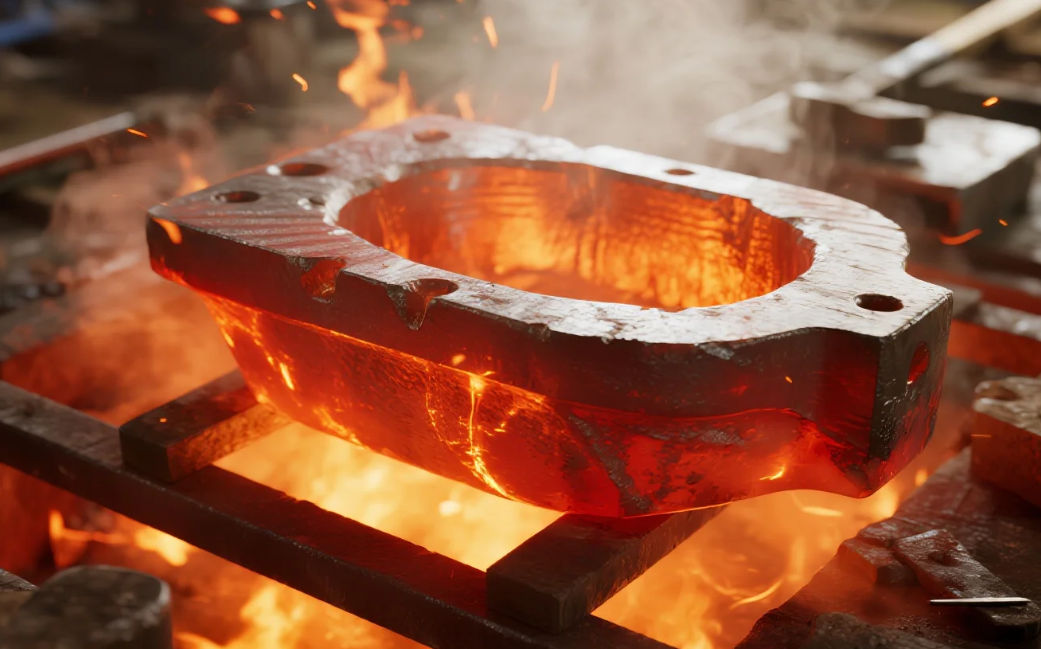Edificio 49, Parque Industrial Fumin, Vilaxe de Pinghu, Distrito de Longgang
Domingo pechado
Servizos de forja seguen sendo o método de fabricación preferido cando importan a resistencia, a continuidade do grán e a xeometría reproducible. Para compradores (enxeñeiros, adquisicións, OEM) que buscan solucións personalizadas de forxado , este artigo explica como funciona o forxado de precisión moderno.

O forxado de precisión combina deseño controlado de matrices, control rigoroso do proceso e mecanizado secundario para ofrecer pezas con:
Propiedades mecánicas melloradas (fluxo de grano aliñado coas traxectorias de carga).
Precisión dimensional reproducible (tolerancias típicas ata ±0,1 mm segundo o proceso).
Maior precisión para reducir as tolerancias de mecanizado , o que reduce o custo total e o prazo de entrega.
Procesos típicos: forxado en matriz pechada (por impresión), forxado en matriz aberta, forxado por recalcado, forxado rotatorio, embutición en frío e forxado preciso en frío.
Informativo (Cómo facelo / Aprender): Guía paso a paso para escoller un proceso de forxado, capacidades de tolerancia e materiais. Inclúe diagramas ou vídeos explicativos.
Comercial (Comprar / Solicitude de orzamento): Niveis de prezos claros, cantidade mínima de pedido (MOQ), prazos de entrega e opcións de inspección de mostras/primeiro artigo (FAI).
Comparativo / Investigación (Revisión): Comparacións cara a cara forxado vs. fundición vs. mecanizado cunha táboa de datos técnicos.
| Proceso | Tolerancia típica* | O mellor para | Materiais Típicos |
|---|---|---|---|
| Forxado en matrices pechadas | ±0,050,2 mm | Formas complexas de alto volume | Acero, acero aliado, inoxidable, titán |
| Forxeo Frío | ±0,02–0,15 mm | Fixacións de alta precisión, pezas pequenas | Inoxidable, acero de carbono, non ferroso |
| Forxado con matrices abertas | ±0,5 mm+ | Pezas moi grandes, lingotes | Aceros, non ferrosos |
| Forxado por repuxo | ± 0,10,3 mm | Eixes, cabezas, bridas | Aceiro, aluminio |
*As tolerancias varían segundo a xeometría, material e mecanizado posterior.
Contexto do proxecto: Precisábase un fornecedor de automoción de 5.000 carcasas forxadas de yoke exterior, AISI 4140, previamente producidas mediante mecanizado a partir de barra (muito desperdicio, ciclo longo).
Desafío: reducir o desperdicio de material, mellorar a vida útil por fatiga e reducir o tempo de ciclo.
Solução: cambiouse ao forxado en quente con matriz pechada + acabado CNC lixeiro. Optimización do enchido da matriz e eliminación de rebarbas; tratamento térmico ata HRC 32–36.
Resultado (típico, anonimizado): a taxa de refugo reduciuse dun ~7% a un ~2% ao longo do lote; o tempo de mecanizado por peza baixou un 40%; a durabilidade por fatiga mellorou nas probas de laboratorio nun ~25%.
Por que é importante: demostra as melloras en custo e rendemento que buscan os compradores — inclúa datos reais de medición do seu control de calidade ao publicar para aumentar a credibilidade.
Dereitos de autor © Shenzhen Perfect Precision Products Co., Ltd. Todos os dereitos reservados — Política de privacidade—Blog